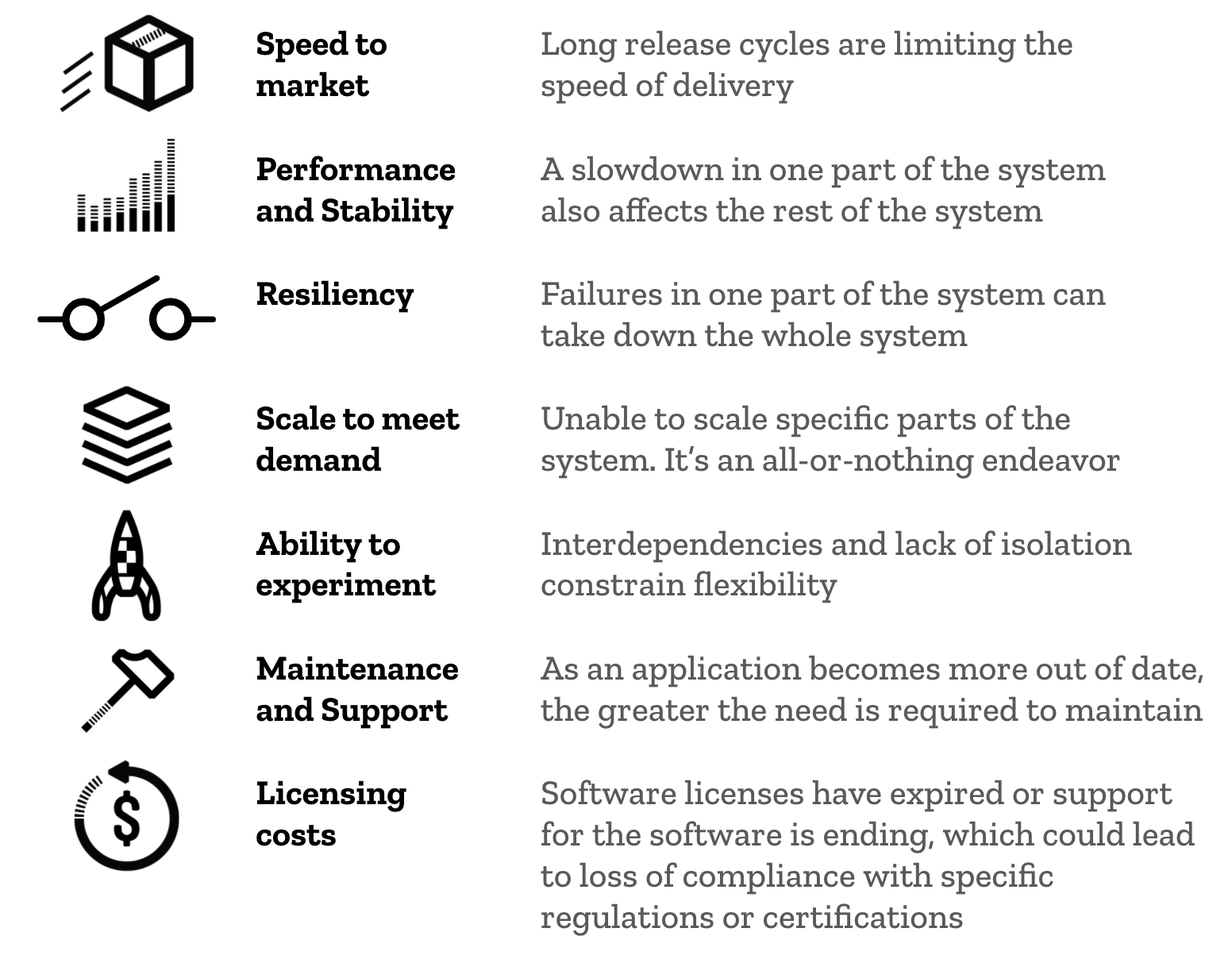
What is legacy? A misused term that’s vital to your business resilience.
Everyone has heard the term “legacy” and, let’s be honest, are using it to describe any piece of software that isn’t built on top of the latest technology. Of course, I’m sure you have also heard legacy defined as: Hard to maintain Documentation is out-of-date Written by developers who have left the company No automated […]
Everyone has heard the term “legacy” and, let’s be honest, are using it to describe any piece of software that isn’t built on top of the latest technology.
Of course, I’m sure you have also heard legacy defined as:
- Hard to maintain
- Documentation is out-of-date
- Written by developers who have left the company
- No automated tests
The obvious thing to do then, is to simply change the technology. Let me put it another way: by changing the technology, we will have up to date documentation with automated tests in easy-to-maintain code, right? While all of the definitions above may be true, don’t they stem from the development culture rather than any specific technology?
Changing the technology won’t help fix the cultural part
Changing technology doesn’t address the issues stemming from development culture. In fact, it generally has the opposite effect. New technology brings with it a lot of unknowns that have already been found in your legacy systems. These unknowns will cause unforeseen extra work causing shortcuts to be taken to meet deadlines, resulting in creating tomorrow’s legacy.
Whether you love it or hate it, your legacy system is the one that is operating the business AND often paying your salary! It requires more than just a desire for new technology to start modernising it.
So if legacy is not defined solely by technical issues, then how is it defined? Gartner defines it as “an information system that may be based on outdated technologies, but is critical to day-to-day operations.” This is a good summary, but there is one part missing: the need to keep up with growing business demands. Thus, I would define legacy as:
Outdated systems that cannot keep up
with growing business demands
BUT run your business
This definition will help you focus on what you want to achieve, without getting distracted by the current shortcomings of your legacy system or the lure of the latest silver bullet. Clearly understanding what it is that you want to achieve helps identify whether it is the organisational structures, the culture, or the technology itself that needs changing.
A key to remember is that the issue is rarely technology alone. It will include processes, such as bureaucratic approval “gates”, which don’t require technology changes, but rather rethinking your processes.
Companies typically find that their legacy systems and processes are limiting them in one or more of the areas listed in the figure below. While all areas may be seen as applicable to your business, there will be a couple that are most relevant.

I mentioned in a previous blog the importance of making conscious changes to a system and the use of SCRs (System Continuity Records). It is for exactly this situation that SCRs are invaluable. They provide the insights to see which areas are the most relevant.
Once you have identified the areas that you want to address, it is essential to state and communicate these clearly. This will form the basis for your modernisation approach and help fellow colleagues follow you on this journey.
Interested in hearing more? Please join our Futures of retail webinar on Wednesday 10.6.2020 at 2PM. We will go into more detail why legacy shouldn’t stop you in your endeavours.
While you’re at it, why not read our articles on why legacy modernisation is a top priority for companies just now and how to start modernising your legacy without creating the legacy systems of tomorrow.
Our next piece on modernising legacy will focus on the tempting but dangerous Big Bang approach. Stay tuned!
[contact-form-7 id=”9154″ title=”Modern arch. blog post series – subscribe”]



